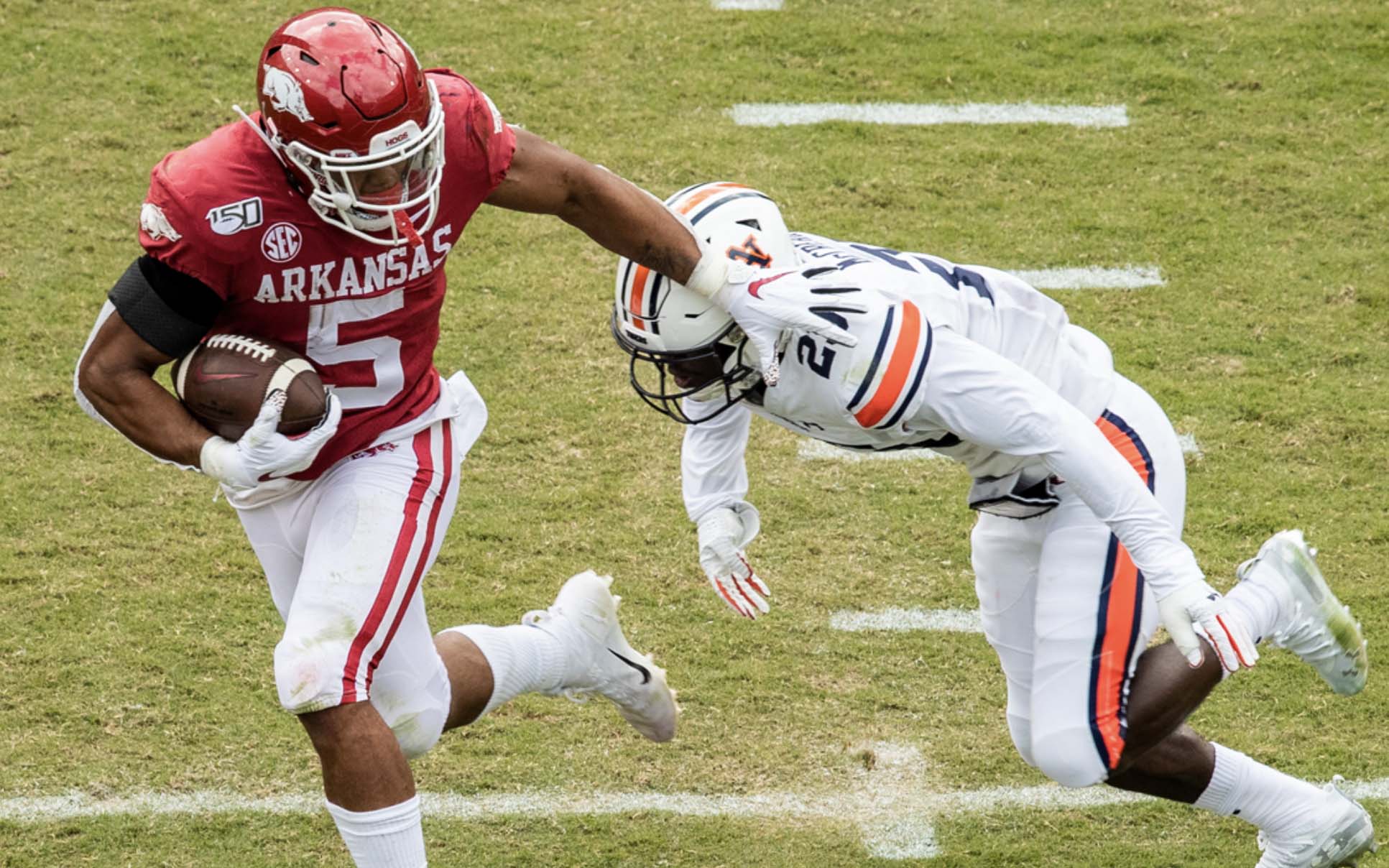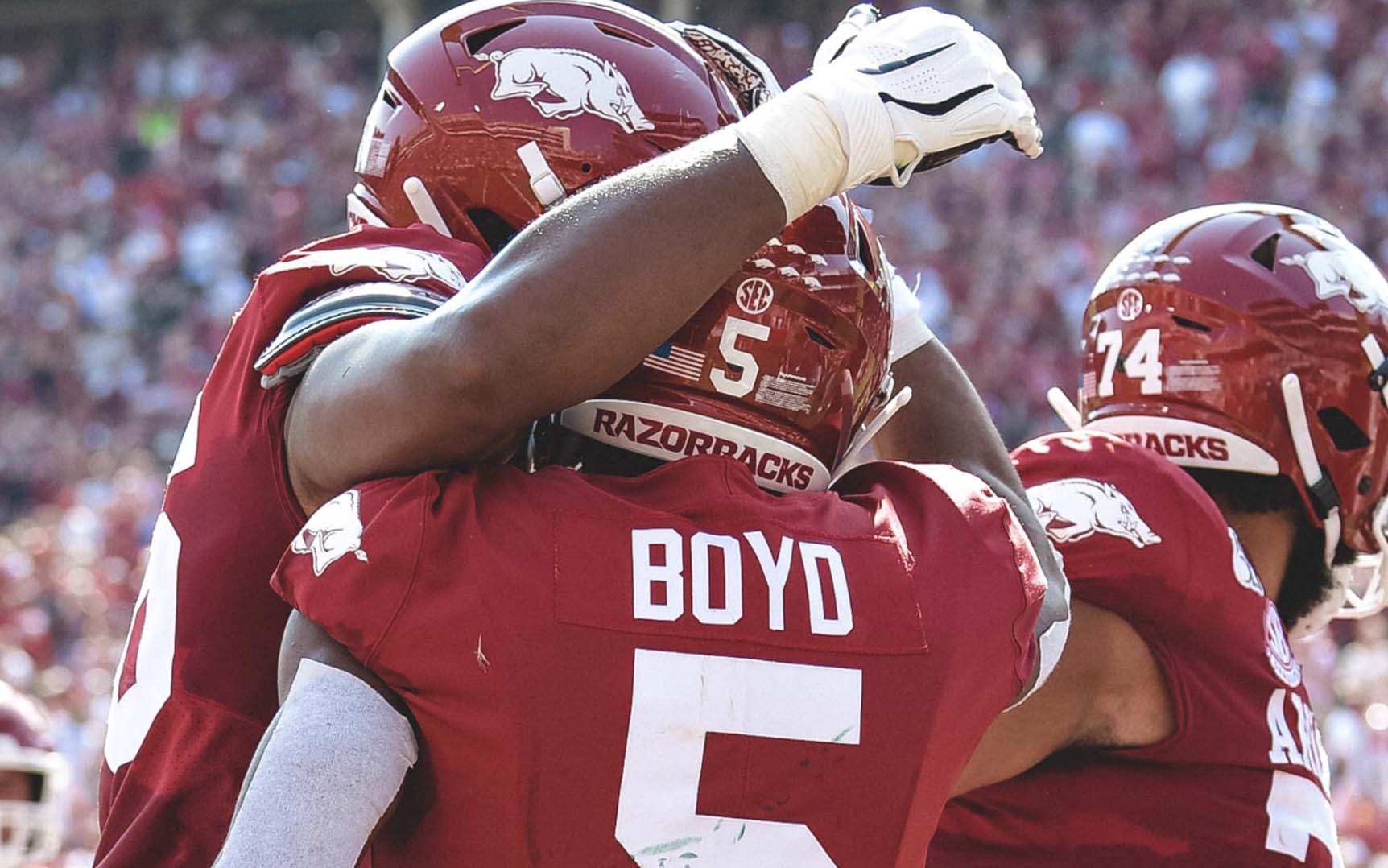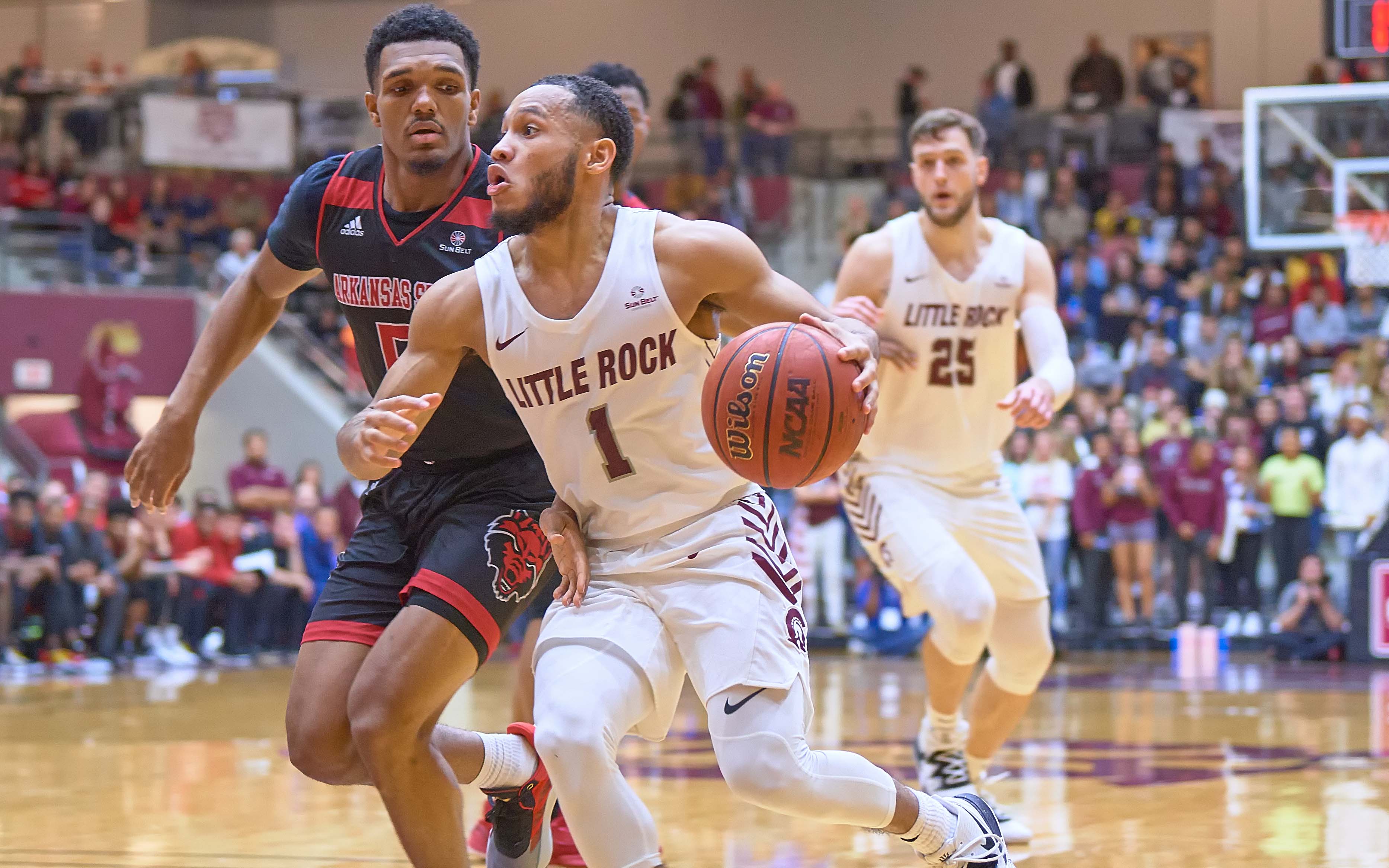Arkansas colleges prepare for unprecedented season on and off the sports field
June 29 - July 5, 2020
By Krishnan Collins
Despite a COVID-19 induced shutdown to the collegiate athletic world in March, colleges around the state looking to get their athletic programs back in business face challenges on all fronts to make it happen.
At a time where many fall sports’ workouts would be well underway and in full swing, weight rooms and practice fields look different across Arkansas. Student athletes have started returning to campus, but even that act requires strict protocol. The University of Arkansas at Fayetteville’s (UAF) first group of teams returned to Northwest Arkansas on June 8 but went through an initial screening process before they stepped on campus.
“It focuses mainly on asking about symptomatology and where those students have moved around during the time they were away from campus,” UAF Deputy Athletics Director Derita Ratcliffe said. “The screening prior to returning to Fayetteville is asking some of those questions guided by CDC and Arkansas Department of Health information regarding whether they have traveled to hot spots as well as who they come into contact with.”
That screening process now continues every day by Teamworks, an online platform the UAF uses to communicate with student athletes. Typically, athletes fill out a survey before going to campus daily that determines whether they are cleared to workout. After being cleared to workout, each athlete’s temperature is taken before entering a facility and each athlete then must wear a mask into the building.
The precautions do not stop there as UAF, along with the University of Arkansas at Little Rock (UALR) and Arkansas State University (A-State), all have weight room guidelines in place. UAF changed the layout of some equipment and even roped off other pieces of equipment to make its weight room safer.
“In addition, there is built in time between lifting groups to sanitize the room,” Ratcliffe said. “Two students use a particular piece of equipment and when they are done, they wipe that down before they move to the next piece of equipment. Then in between the total Group A and Group B, there is a more intense cleaning of the facility by the staff before the next lifting group comes into the space.”
While A-State and UAF both have to think of guidelines for the large group of athletes that is the football team, UALR has what could be seen as an advantage in this pandemic: The Trojans have no football team.
Teams have started to return to Fayetteville and Jonesboro already, but UALR Athletic Director George Lee said he hopes student athletes not already on campus or in central Arkansas will start returning to Little Rock in July.
“I think the biggest advantage right now is we don’t have to make some of those decisions that schools that have football do as quickly as they have had to make them,” Lee said.
COVID-19 budget constraints
The impact of COVID-19 stretches far beyond the playing field and weight room. UALR and fellow Sun Belt Conference Member A-State have both looked to reduce travel costs for teams this season.
Lee said the Sun Belt met for about a month discussing all the possibilities of reducing travel costs for various Conference members that stretch from southern Texas to the Atlantic Coast. He said UALR is focused on reducing travel costs for the fall sports of volleyball and soccer as their seasons are fast approaching.
“It does not make sense [for us to compete that far away] in the time that we are looking at,” Lee said. “For one, we don’t know from a revenue standpoint what this year is going to look like. I don’t know how our ticket sales are going to be. Where are we going to be at from an athletic fee standpoint? Where are we going to be from a donations/contributions standpoint?”
For volleyball and women’s soccer, Sun Belt teams are only going to play within the division they reside in to regionalize travel, said Lee. This saves the Trojans a trip to Appalachian State and Coastal Carolina, two trips that would have been much more expensive than others.
“I think we are both trying to reduce the flights that our student athletes are in both from a health and safety standpoint but also as a cost cutting measure,” said the UALR athletic director. “But I do not know right now if I’m going to have to cut the budget. I may not have to. I am not going into it with the mindset of I have to cut x amount of dollars.”
While soccer will not have any flights this season, the Trojan’s basketball programs will have to travel by plane to some games. These games bring money to the Little Rock program through game guarantees.
This spring, the Trojans lost around $250,000 of revenue because the men’s NCAA basketball tournament was canceled. The way money is handed down from the tournament and through the Sun Belt would usually combine to give UALR that big revenue boost, but COVID-19 took away that opportunity this year.
However, Lee pointed out some money was made up by not having expenses for spring sports that were canceled. The Trojan athletic director said Little Rock has been in a budget crunch for about 10 years due to declining enrollment and around 40% of the athletic department’s budget comes from an athletic fee. So, if enrollment goes down, funding goes down.
At Arkansas State, Athletic Director Terry Mohajir and other school athletics employees took a voluntary pay cut in May for two months. Once that period ends, it will then be decided whether to extend the pay cut, Mohajir said.
Game-time decisions
Plans for fans brew in the minds of the various athletic programs across Arkansas as the coronavirus is a fluid situation. Ratcliffe said she is not a member of the multiple groups that are considering the guidelines for fan attendance at UAF but does hear regular updates from the events committees existing on campus. “Those plans are in draft and ever-changing adjusting to what the governor’s allowances are,” she said.
On June 12, A-State released a list of potential adjustments and guidelines the university expects to conduct at Centennial Bank Stadium for home football games on the athletics department’s website. Mohajir also addressed A-State fans in a letter on the site.
“Our initial projections indicate that we will be able to seat all of our season ticket holders in accordance with current state guidelines,” Mohajir said. “I assure you all levels of season ticket holders will be given first priority during the planning process. Single-game ticket purchases are conditional at this time and will be determined at a later date.”
Additionally, game attendance represents another factor Arkansas athletic programs must plan for when it comes to fan involvement. Electronic or paperless tickets look like a viable option to further reduce the chance of COVID-19 spread among fans.
The Razorback basketball fans already used the electronic ticket system heavily, which could now be passed on to other sports. Season ticket holders for Razorback football games will receive seven separate barcodes for all UAF home games.
“The how and when those would be sent is still being determined,” said Ratcliffe. “Whether or not you would have all of your barcodes at one time or if they would be sent out 48 hours before the game. A lot of those things are still being developed and we are still deciding what might be the best way to move forward with that.”
Still, there are downsides to the paperless ticket idea. As of today, Mohajir said A-State plans paperless tickets in the basketball arena but not for football games, although the university is evaluating its options. “We typically like to do paper, but we will send them the tickets and we probably would not tear them, they would just show them,” Mohajir said.
COVID-19 has also taught some programs more efficient ways to conduct team meetings away from the field. In April, the University of Arkansas for Medical Sciences (UAMS) issued a set of guidelines for collegiate athletics which included advice on socially distant team meetings.
Ratcliffe said since March many coaches and student athletes have been adapting to electronic platforms. She explained that if four or five students needed to meet with a tutor and the group found it difficult to all be able to meet at one time due to other appointments on campus, a video chat could solve this problem and make it easier for students to tune in from wherever their next appointment might be.
“Looking for silver linings, I think we have learned some things in these last few months that can help us operate more efficiently,” said Ratcliffe.
Meanwhile, all three universities will look at dining hall operations and guidelines along with state health department guidance on how student athletes should interact and eat in on-campus dining halls. More work continues to be done to get teams back on campus, back in shape and back ready for competition, officials said.
Mohajir said he plans on fall sports starting on time. Lee and Ratcliffe said they are hopeful fall sports will start on time but explained the situation is ever changing and there is much to learn over the coming weeks.
“COVID is a reality of our today and is going to be a reality of our tomorrow,” Ratcliffe said. “What our charge is, is how do we interact with that reality in a responsible way.”
PHOTO CAPTIONS:
1. Arkansas universities look to restart athletic programs amid COVID-19 challenges. (Photo courtesy of UA Fayetteville Athletics)
2. Razorback running back Rakeem Boyd celebrates with teammates in Arkansas’ 55-34 win over Colorado State. (Photo courtesy of UA Fayetteville Athletics)
3. Little Rock’s Markquis Nowell dribbles past A-State’s Christian Willis in Little Rock’s home February 2020 victory over their Natural State rival. (Photo courtesy of UA Little Rock Athletics)





